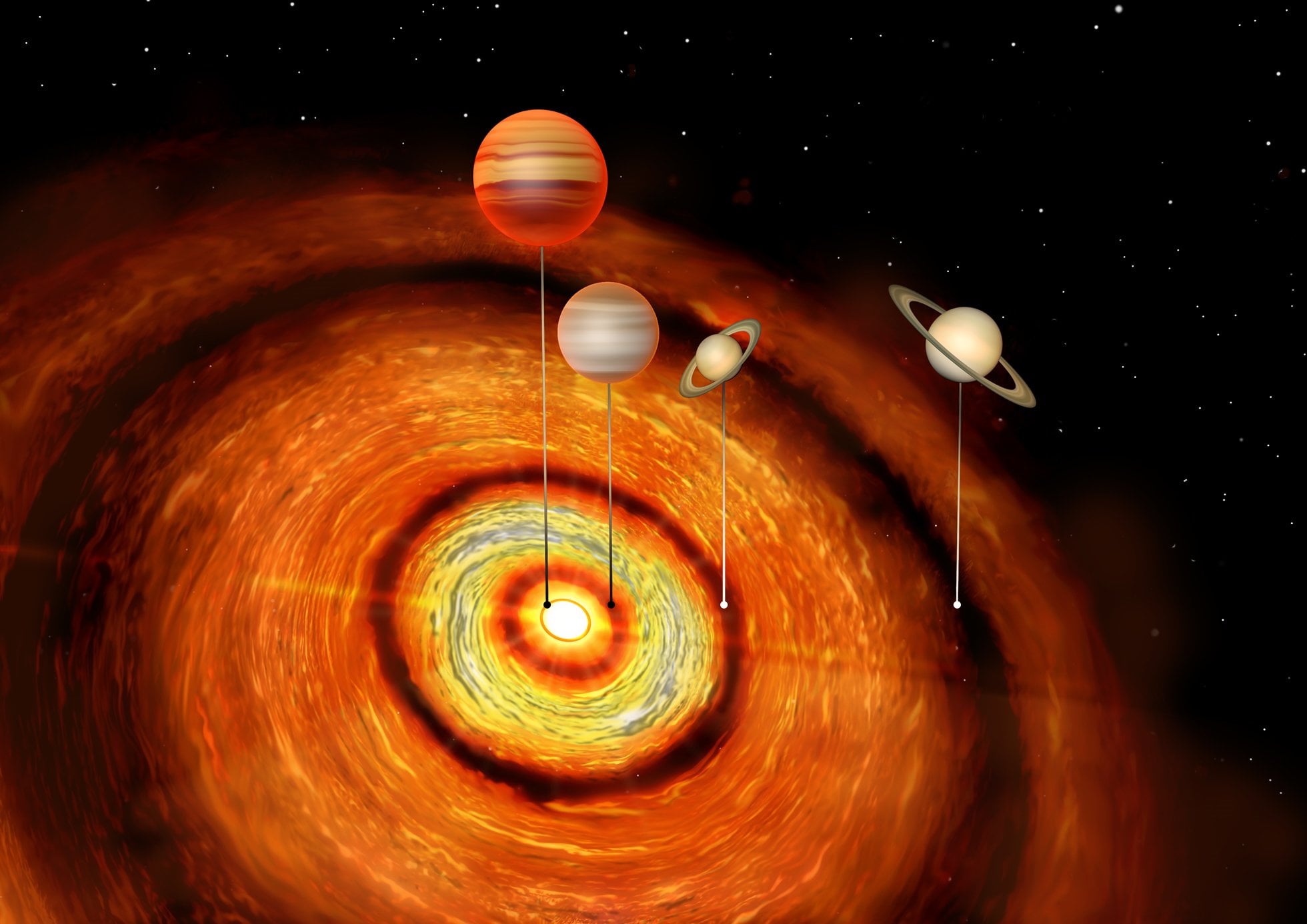Scientists have discovered three huge gas planets orbiting a young star, which they say seems impossible. Since the young star had already hosted one gas giant, this discovery brings the number of large planets in the star system up to four.
In a study published in the Astrophysical Journal Letters, scientists examined the star system which hosts three huge gas planets in addition to the fourth one that had already been discovered. This is not the only record this star system sets; it also has the most extreme range of known orbits.
These findings make scientists question a lot of things, including how such systems even come to exist. The star known as CI Tau is considered a young star at only 2 million years old. That means this star is close to the beginning of its life cycle, according to astronomers. The star is also surrounded by a huge disk of dust and ice known as a protoplanetary disc, in which planets, their moon, and other celestial bodies form.
The CI Tau system is located about 500 light-years away tucked in a productive “stellar nursery” of the galaxy, which was already known to have a “hot Jupiter” around this young star. Hot Jupiters are a special class of gas giant exoplanets orbiting close to their host stars, resulting in high temperatures.
Scientists used the Atacama Large Millimeter/submillimeter Array (ALMA) and identified three gaps in the protoplanetary disc. The theoretical modeling suggests those three gaps were caused by three huge gas planets orbiting the star.
The three huge gas planets and the Hot Jupiter in the star system have a wide range of masses. The smallest of the four is roughly the same mass as Saturn, while the largest is up 10 times the size of our Jupiter, and the planets have a wide range in orbits too. The Hot Jupiter orbits its star closer than Mercury orbits our Sun. The farthest two planets orbit at a distance three times greater than the distance at which Neptune orbits our sun.
“It is currently impossible to say whether the extreme planetary architecture seen in CI Tau is common in hot Jupiter systems because the way that these sibling planets were detected—through their effect on the protoplanetary disc—would not work in older systems which no longer have a protoplanetary disc,” lead author Cathie Clarke from Cambridge’s Institute of Astronomy said in a statement.
Scientists still need to determine whether the three huge gas planets helped push the Hot Jupiter into a close orbit to its star and whether this process is commonly found among Hot Jupiters. Scientists also don’t know how the outer planets formed.
“Planet formation models tend to focus on being able to make the types of planets that have been observed already, so new discoveries don’t necessarily fit the models,” Clarke said. “Saturn mass planets are supposed to form by first accumulating a solid core and then pulling in a layer of gas on top, but these processes are supposed to be very slow at large distances from the star. Most models will struggle to make planets of this mass at this distance.”





